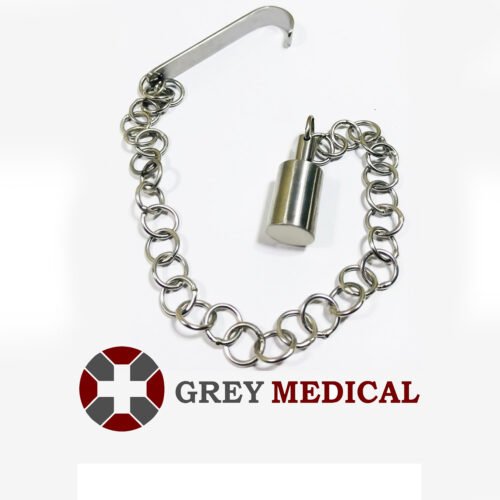Introduction
The Gruber retractor is a vital tool for many delicate surgical procedures, and proper maintenance is essential to keep it functioning optimally. From sterilization techniques to safe handling and storage, following best practices ensures that this retractor remains reliable and durable for long-term use. In this blog post, we’ll discuss the best practices for using, cleaning, and storing the Gruber retractor to maintain its functionality and longevity.
Best Practices for Using the Gruber Retractor
To get the most out of the Gruber retractor, it’s essential to use it correctly and handle it with care. Here are a few tips for optimal usage:
Use the Appropriate Blade Size and Position
The Gruber retractor comes in various blade sizes and configurations. Choose the correct size for each specific procedure and adjust the blades carefully to avoid unnecessary pressure on tissues.
Handle with Care
Although durable, the Gruber retractor’s delicate parts can be damaged if handled roughly. Avoid dropping the instrument or applying excessive force, which can lead to misalignment or even breakage.
Limit Exposure to Moisture
During procedures, ensure the retractor is not exposed to excessive moisture, which can affect its grip and performance. After use, clean and dry it thoroughly before sterilization.
Sterilization and Cleaning Techniques
Cleaning and sterilizing the Gruber retractor after each use is essential to prevent contamination and infection risks. Follow these steps to ensure thorough cleaning:
Initial Rinse
Rinse the retractor under running water immediately after use to remove any blood or tissue debris. This prevents buildup and makes the subsequent cleaning process easier.
Ultrasonic Cleaning
For thorough decontamination, place the Gruber retractor in an ultrasonic cleaner, which removes any particles from hard-to-reach areas. This process is especially useful for delicate instruments that cannot be brushed or scrubbed easily.
Autoclave Sterilization
Once cleaned, the retractor can be autoclaved. Ensure it is dried before autoclaving, as moisture can lead to rust or corrosion. Always follow the manufacturer’s recommendations for sterilization temperatures and times.
Proper Storage Techniques
Storing the Gruber retractor correctly is essential to prevent damage and maintain its effectiveness. Here’s how to store it properly:
Designated Storage Trays
Store the Gruber retractor in a designated tray to protect it from accidental impacts and to keep it organized with other instruments. This also reduces the risk of damage from overcrowding or improper handling.
Avoid Direct Sunlight and Moisture
Store the instrument in a dry, dark area, away from direct sunlight or damp environments. Exposure to light and moisture can lead to corrosion, compromising the retractor’s functionality.
Regular Inspection and Maintenance
Schedule regular inspections to ensure the retractor remains in good condition. Check for signs of wear, such as dulling, rust, or loose components, and address any issues immediately to avoid complications during surgery.
Training for Handling and Maintenance
Proper handling of the Gruber retractor extends to all team members involved in its use and maintenance. Conduct regular training sessions for staff on proper handling, sterilization, and storage techniques to ensure consistency and safety.
Conclusion
The Gruber retractor is a precision tool that requires careful handling and maintenance to perform effectively in delicate surgeries. By following best practices in usage, cleaning, and storage, healthcare teams can ensure that this essential instrument remains reliable and functional, ultimately contributing to better surgical outcomes and patient safety.





Comments